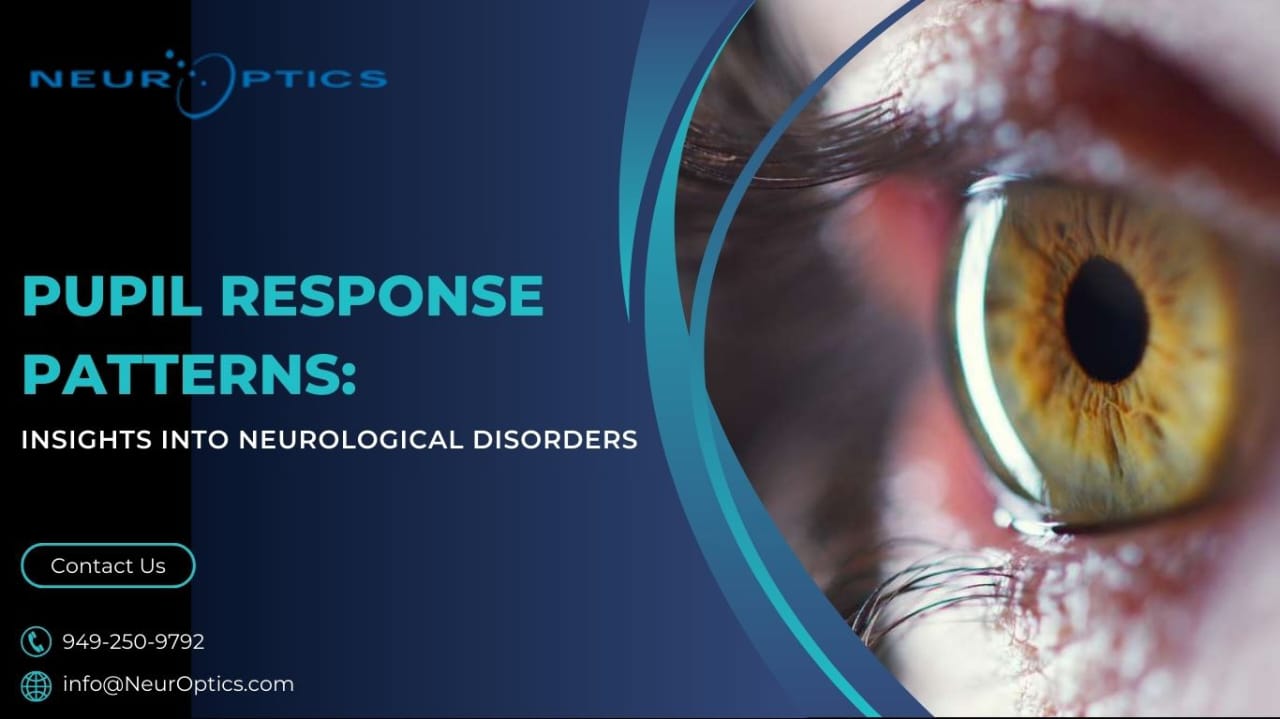Pupil Response Patterns: Insights into Neurological Disorders
Often called the mirror of the soul, the eyes of human beings are a treasure trove of secrets other than being beautiful in nature. The response patterns of the pupils are specifically interesting since they give an idea of how the nervous system works. Moreover, these reveal much about what creates different neurological disorders. This blog post explores recent findings and practical uses related to the evaluation of pupillary reaction patterns — showing how they could transform diagnosis and treatment for patients with brain conditions.
Recognizing Pupil Response Patterns:
The reaction of the pupils is an indication of numerous elements that have been altering in several dynamics like size and sensitivity. The autonomic nervous system controls these sets of movements within the iris muscle; it is an independent system that acts through muscular control over the Iris. The response patterns can also provide information about neurological function in pupillary neuro exams for cognitive processing emotional stimulation due to drugs’ actions on them etcetera, so people just need to look at them keenly.
Pupil Response Patterns in Neurological Disorders:
Only the most recent studies have discussed the complexity of the waveform connection between pupil response patterns and various neurological disorders. For example, in myocardial infarction, heart failure, and heart valve disorders, pupil response malfunction can help in diagnosis.
What is more, in a condition that happens in the brain, such as traumatic brain injury (TBI), stroke, and neurodegenerative diseases like Alzheimer’s and Parkinson’s, aberrant pupil measurement responses may serve as early markers of underlying Pupil size or shape modifications, latency abnormalities, or sudomotor dysfunction can be helpful diagnostic tools by also helping shape treatment decisions in these difficult neurological cases.
Traumatic Brain Injury (TBI):
Traumatic brain injury (TBI) is one of the greatest concerns for public health, as chronic cognitive impairment, disruption of motor functions, and others often accompany TBI. Pupil pattern responses to these injuries can be highly sensitive reflectors of TBI severity and outcome forecasts. Studies have demonstrated an effect on pupil shape in pupillary exams done by neurological tools, responsiveness, and reactivity. They also note the degree of brain impairment and prognosticate the degree of consciousness and functional recovery, as well as the possibility of death.
The intelligence of the current research is that clinicians can track the reaction patterns of TBI patients during treatment and fine-tune the rehabilitation strategies, consequently optimizing patient care.
Stroke:
Stroke is another major disease of the nervous system that causes extreme neurological impairment and death condition. This is caused by the breakage of regular quality blood flow supply to the brain tissues. From the point of view of a pupil, response patterns (mainly stroke severity, its localization, and the prognosis) can give invaluable hints. Alterations in pupil diameter, reactivity, and scale done by the NPi pupillometer exam may be a marker reflecting the degree of ischemia and intracranial pressure changes and the risk of secondary neurological damage development.
Through trials of event-related potentials, which measure pupil response patterns in stroke patients, doctors are able to direct optimal management, predict final outcomes, and help in recovery efforts.
Advances in Pupillometry Technology:
Pupillometry, which is on the latest technology, is an entirely new field of research that has added a great deal in the evaluation of pupillary response patterns in clinical checks. A new generation of pupillary devices uses sophisticated algorithms and highly accurate detectors to capture pupil size, reactivity, and movement data. Clinicians can use these quantitative assessments to provide them with objective data to monitor neurological functions and decide on the patient’s treatment plan. These are the data that will show the progress over time, too.
By using pupillometry, healthcare practitioners can increase the accuracy of diagnosis, uncover insights about the evolution of the disease process, and improve patients’ health.
Conclusion
NeurOptics is a pioneering company with several pupillometry products, like Npi-300, that play an important role in the proper neurological assessment and patient care. By providing clinicians with modern technology tools and comprehensively training them in glaucoma diagnosis and solving various problems in pediatric patients with neurological disorders, our pharmaceutical company strives to advance the science of diagnosis.






